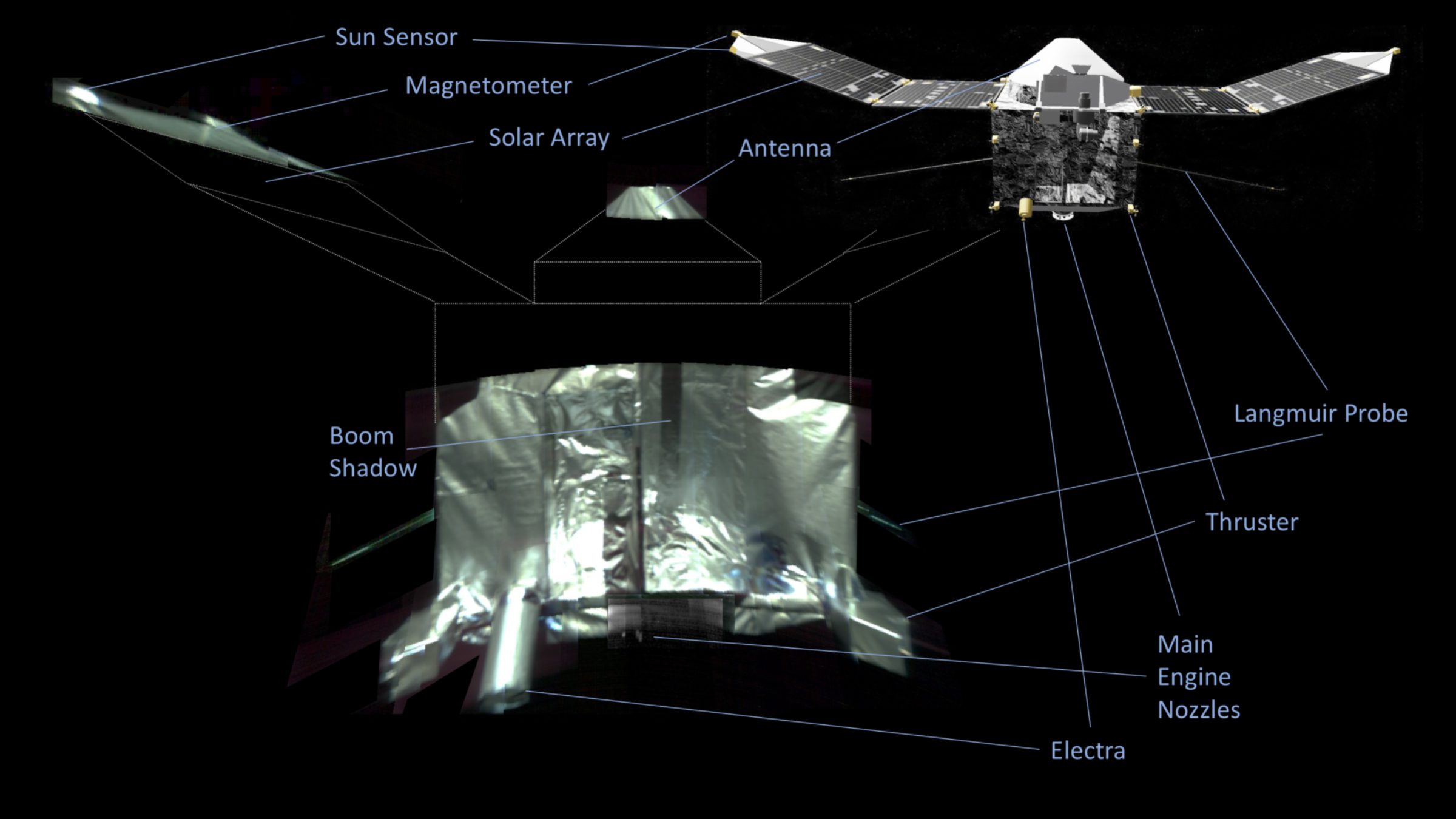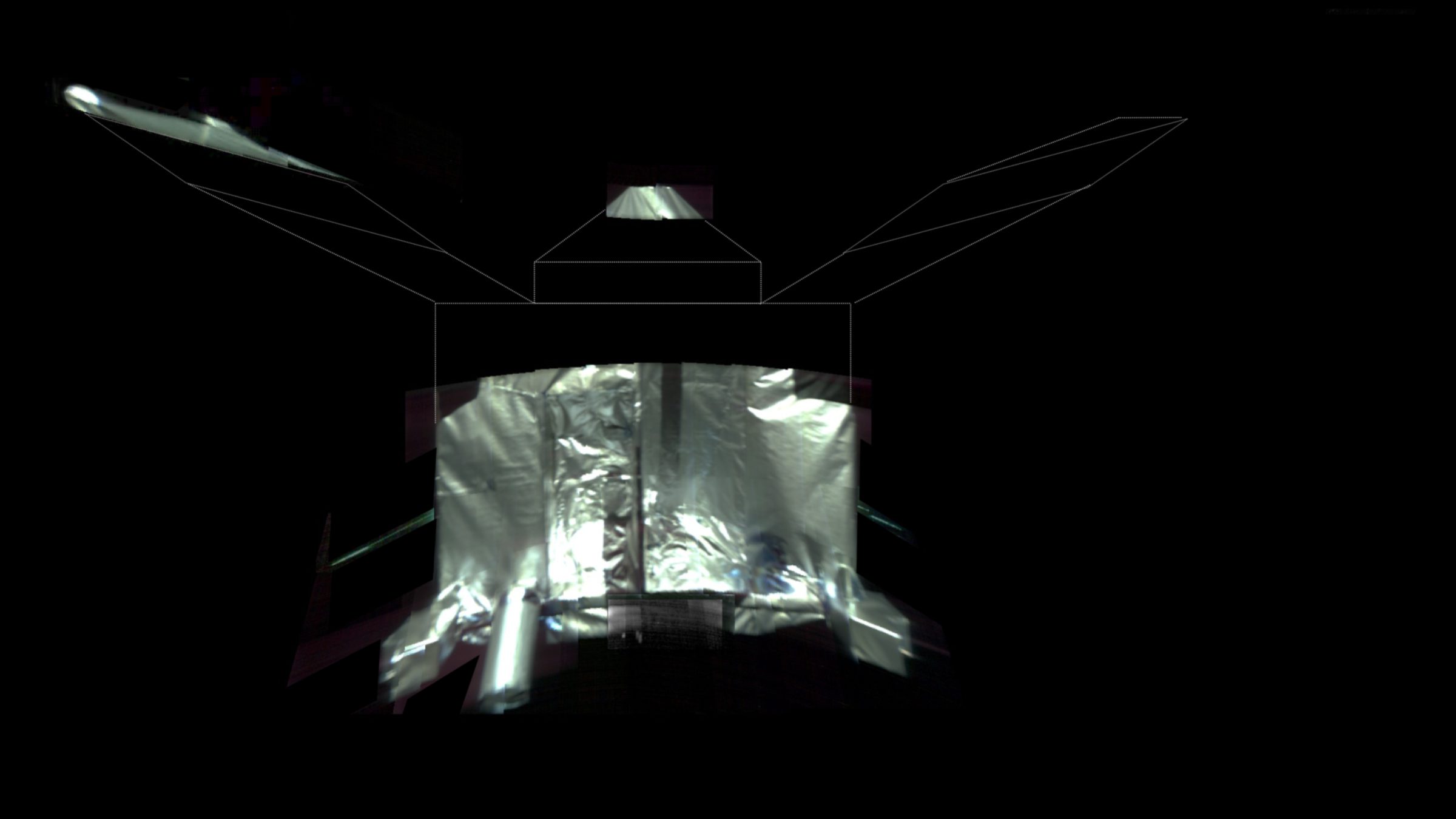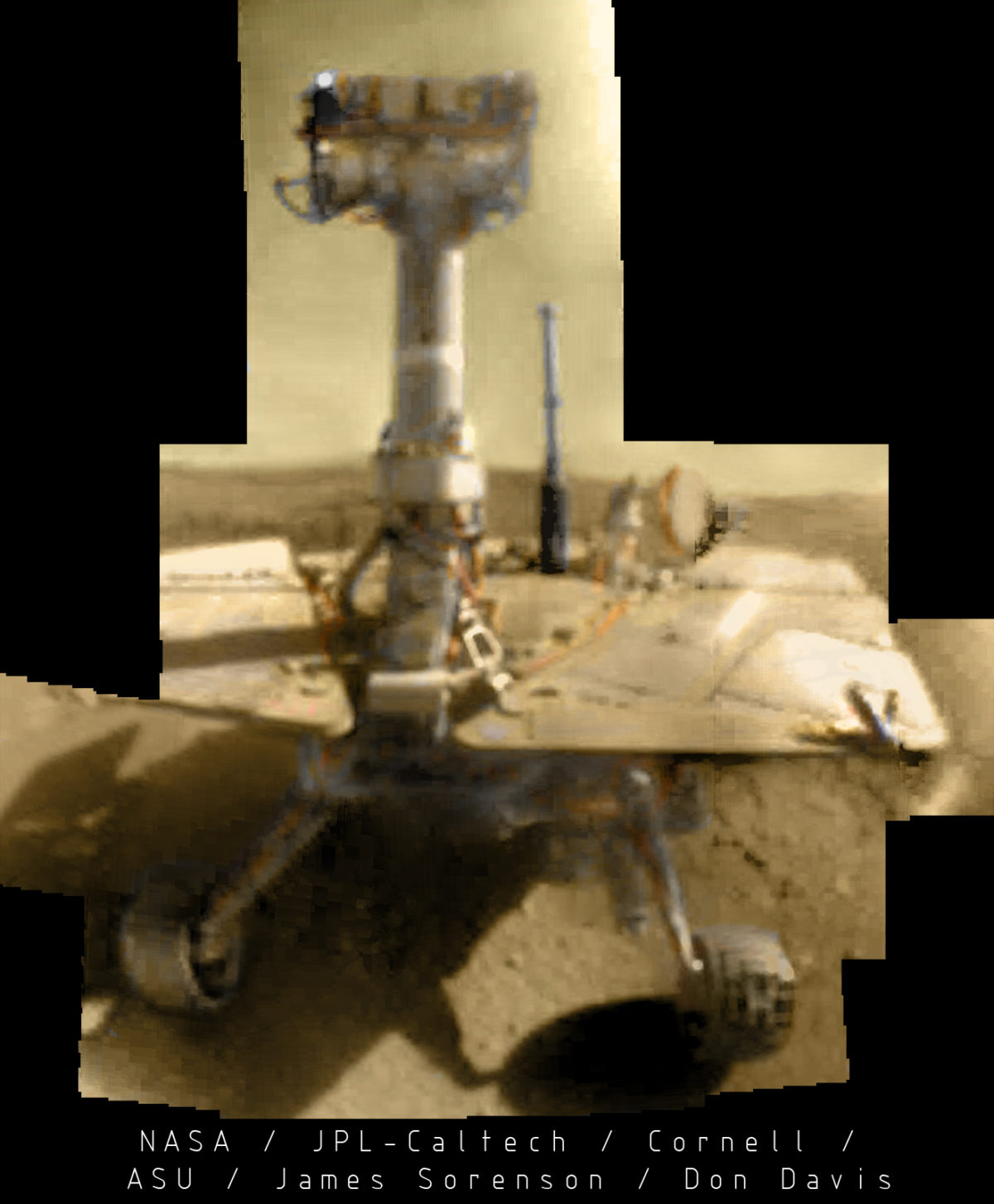Jason Davis • Oct 08, 2018
MAVEN, in orbit around Mars, snaps anniversary selfie
NASA's MAVEN spacecraft recently celebrated its fourth Earth year in Mars orbit by snapping a selfie to celebrate the occasion.
The spacecraft entered orbit on 21 September 2014 to figure out what happened to Mars' atmosphere, and how that relates to the planet's transition from a warm, wet past to its inhospitable current state state.
MAVEN, which stands for Mars Atmosphere Volatile EvolutioN Mission, is not equipped with a standard visible light camera, but it has an ultraviolet spectrograph imager that is used to measure the composition of Mars' atmosphere. Mission managers were able to rotate the imager, which sits at the tip of a 1.2-meter boom, back towards the spacecraft’s body and collect 21 frames that were stitched together to create a partial selfie. Not all of the spacecraft can be seen due to the imager’s limited rotation range.


The imager is not optimized for such a close-up scale, so the selfie appears fuzzy and distorted. But several of MAVEN’s components are clearly visible, including the high-gain antenna used to communicate with Earth, a thruster, and part of a communications relay used to receive transmissions from spacecraft on Mars' surface.
In one individual frame extracted from the mosaic, ochre-colored Mars looms in the background. Olympus Mons, a 25-kilometer-high shield volcano that holds the record for the tallest mountain in the solar system, can be seen as a dark splotch.

Many spacecraft have captured self-portraits over the years, but these are usually done with conventional cameras. There have been exceptions to this rule: In 2006, the Mars Reconnaissance Orbiter used its climate sounder to view the spacecraft’s instrument deck, and in April 2018, NASA's Opportunity rover used its microscopic imager to create a 25-frame selfie.

MAVEN completed its one-year prime mission in 2015, and is continuing to study Mars’ atmosphere. Using data collected by the spacecraft, scientists confirmed that solar wind is responsible for stripping the atmosphere away from the planet. Unlike Earth, Mars has no magnetic field to deflect both everyday solar wind and intense solar storms that were more frequent in the Sun’s early days. Over time, Mars has lost most of its atmosphere, and what's left is still leaking slowly into space.
Next year, the high point of MAVEN’s elliptical orbit will be lowered so it can better serve as a relay for spacecraft on Mars’ surface. That includes NASA's Insight lander, which arrives in November. MAVEN is already performing regular communication sessions with Curiosity in order to practice for its greater future role in data relay.
Support our core enterprises
Your support powers our mission to explore worlds, find life, and defend Earth. You make all the difference when you make a gift. Give today!
Donate

 Explore Worlds
Explore Worlds Find Life
Find Life Defend Earth
Defend Earth

